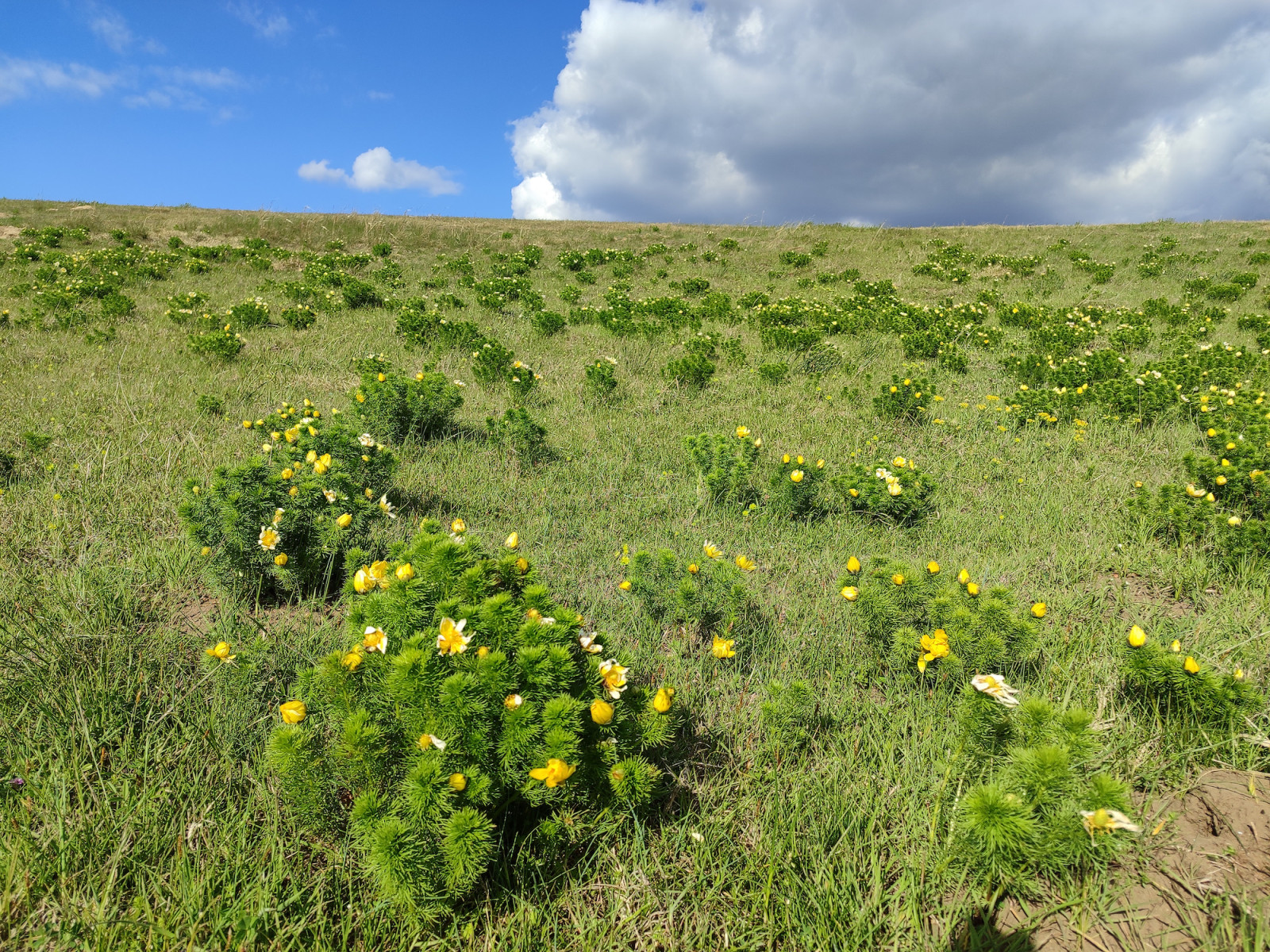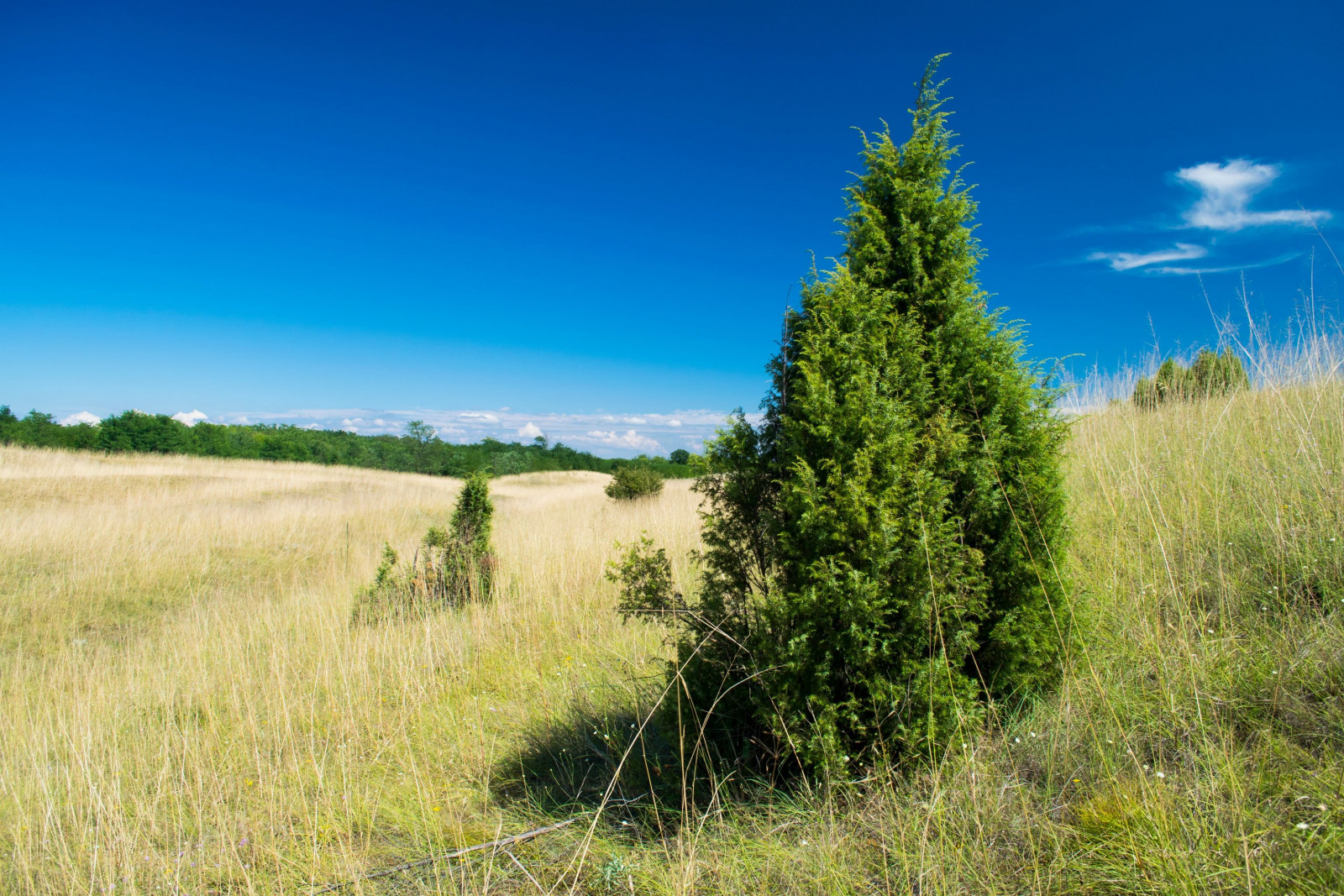Descrição
Grassland with beautiful needle grasses (Stipa) on rolling sand dunes, interspersed with bushes of hawthorn and junipers.
Characteristic birds of these dry and sunny areas are Poupa, Rola-comum, Abelharuco-comum, Picanço-pequeno and Picanço-de-dorso-ruivo, Cotovia-pequena, Laverca, Cotovia-de-poupa, Andorinha-das-barreiras, Toutinegra-gavião, Chasco-cinzento, Petinha-dos-campos and Petinha-das-árvores. During May migration Rolieiro-comum and few dozen strong flocks of Falcão-de-pés-vermelhos were observed on the wires. Among the local rarities, look out for the highly localised calhandrinha.
Photos by Aleksandar Urosevic, Mileta Cekovic and Dragan Simic.
Detalhes
Acesso
The area is accessible from several points off the Kovin – Dubovac road. Driving from Kovin, Hatarica starts about 2 km after the village of Gaj and spreads at the right (southern) side of the road. Zoom in on the map and click on the "P" (parking) sign for driving directions.
A large road-side puddle holds water through the most of the year and in migration attracts waders – Pernilongo, Abibe-comum, Pássaro-bique-bique, Maçarico-bastardo, Perna-vermelha-escuro, Perna-vermelha-comum, Perna-verde-comum, Combatente, etc.
Terreno e Habitat
Dunas , Campina , Árvores e arbustos dispersos , SteppeCondições
Arenoso , Sem sombra , Paisagem aberta , PoeirentoCaminho circular
Nãoé útil um telescópio?
Pode ser útilBoa temporada de observação de aves
Primavera , VerãoMelhor hora para visitar
Migração da primavera , Migração de outono , PrimaveraRota
Caminho largo , Estrada não pavimentadaCaminho dificil
Caminhada médiaAcessível por
Pé , CarroAbrigo/plataforma deobservação de aves
NãoInformação extra
Carry plenty of water on hot days. Sheepdogs which guard the sheep on the pasture could be a problem if the sheep are approached. If the weather is dry, it is partially possible to explore some of Hatarica by car (beware of loose sand), but if there were rains in the previous days, mud and puddles are possible in lower parts of it (beware of deep ruts).
Stick to the existing dirt tracks and do not damage the sensitive vegetation by creating new sets of tracks! Also, be extra careful not to start a wildfire by an overheated exhaust pipe!

